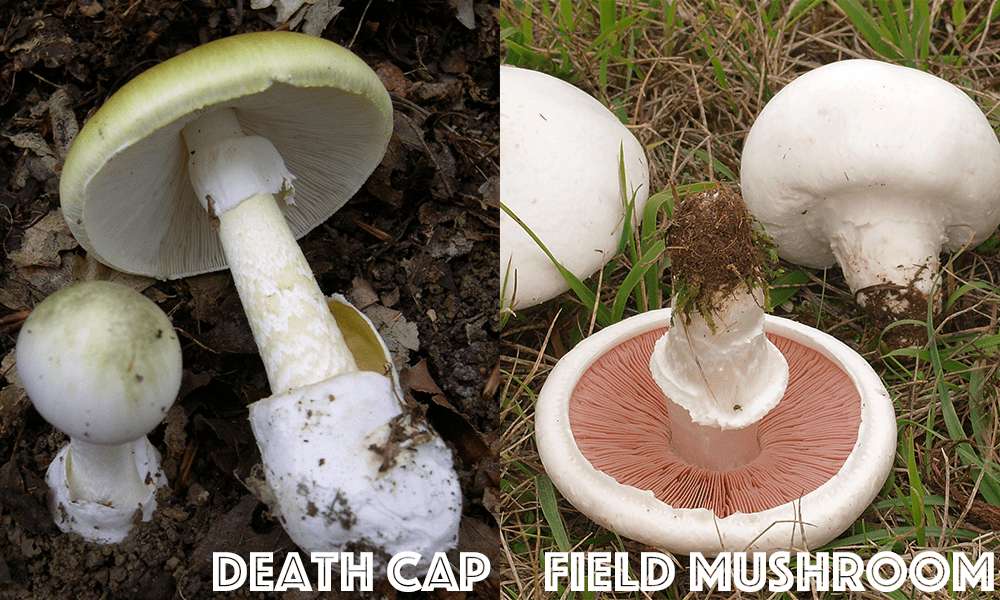Death Cap vs Field Mushroom

For amateur mycologists, distinguishing between mushrooms is crucial, especially when it comes to species that can be easily confused. Here's a breakdown comparing the Death Cap and the Field Mushroom:
Death Cap (Amanita phalloides)
Appearance:
- Cap: Ranges from pale yellowish-green to olive green. The cap is smooth and can be slightly sticky when wet. It's usually convex when young and flattens with age.
- Gills: White, free from the stem, and densely packed.
- Stem: White with a swollen base. It has a distinct ring (or skirt) which is white and membranous.
- Base: Features a white, sack-like volva that can sometimes be underground, so digging around the base of the mushroom is important for identification.
Habitat: Often found in woodlands, particularly under oak trees.
Toxicity: Highly poisonous. Consuming even a small amount can be fatal. It contains potent toxins that cause liver and kidney failure.
Field Mushroom (Agaricus campestris)
There are lots of different field mushroom look a likes. The most important features you need to distinguish are...
Appearance:
- Cap: White to cream-colored, and can turn a pinkish-brown with age. The cap is smooth, and the shape is convex, becoming flatter as it matures.
- Gills: Start off as pink in young mushrooms and turn brown, then a dark chocolate color as they mature.
- Stem: White, with a ring around it. The stem does not have a swollen base or a volva.
Habitat: Often found in grassy fields, meadows, and pastures.
Edibility: One of the most popular wild mushrooms to eat. However, it's crucial to be certain of its identification as there are other similar-looking species that are toxic.
Key Differences:
- Cap Color: The Death Cap has a greenish tint, while the Field Mushroom is white or cream.
- Gill Color: The gills of the Death Cap remain white, while the Field Mushroom's gills are darker, changing from pink to brown.
- Stem Base: The Death Cap has a distinctive volva at the base, while the Field Mushroom does not.
- Habitat: The Death Cap is more commonly found in woodlands, especially under oaks, while the Field Mushroom prefers grassy fields.
Caution:
Always remember the adage: "When in doubt, throw it out." It's better to be safe and avoid consumption if you're unsure about the identification of any wild mushroom. And while visual characteristics are essential for identification, there are other methods such as spore print analysis that can further help in differentiating species. If ever uncertain, consulting with a more experienced mycologist or using trusted field guides is recommended.
